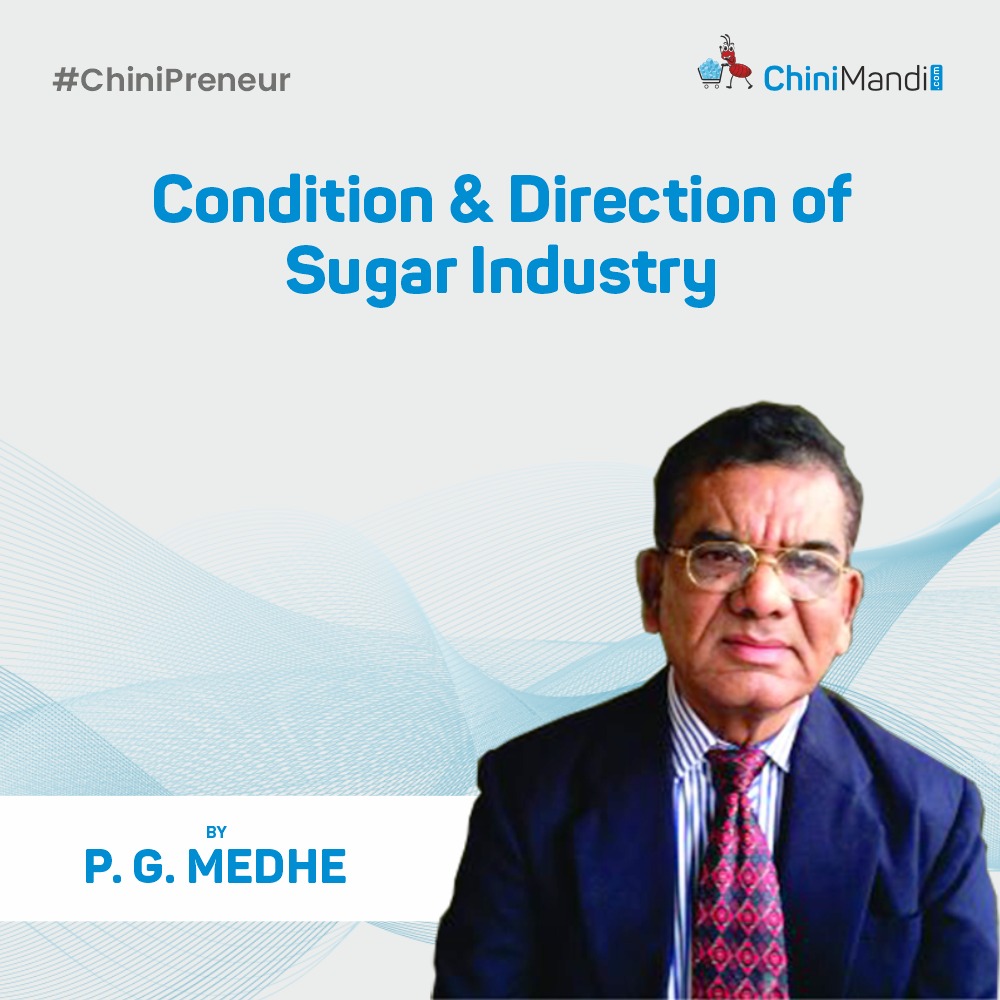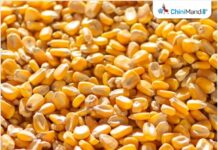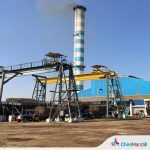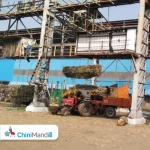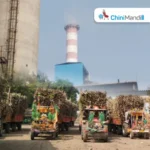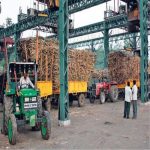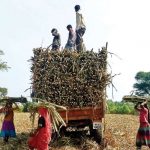Kolhapur district stands as a leading sugarcane-producing region in Maharashtra, known for its progressive farmers, cooperative strength, and a well-established sugar industry ecosystem. The district plays a critical role in supporting the state’s sugar economy.
Despite its strengths, the average sugarcane productivity in Kolhapur is lower than 125 MT/hectare, which district aims to achieve. With a more cane requirement, there is an need to bridge the supply-demand gap and enhance per-hectare yields to ensure efficient utilization of installed capacities.
This Cane Development Plan has been formulated as a pilot initiative to transform Kolhapur into a model district for high-productivity, climate-resilient, and sustainable sugarcane farming. The plan envisions a comprehensive approach that includes seed replacement with high-yielding varieties, training and capacity building, adoption of wide row planting, drip irrigation, use of bio-fertilizers, intercropping, and integrated pest and weed management. It also emphasizes the need for modern agri-extension services and close collaboration between farmers, factories, and government agencies.
The objective is not only to increase average cane yields to 110–125 MT/ha but also to improve farmer incomes, reduce production costs, promote environmental sustainability, and ensure the long-term viability of the sugar sector. The successful implementation of this plan in Kolhapur can serve as a replicable model for other districts in Maharashtra and across India.
1. ACTION PLAN COMPONENTS:
A. Training & Farmer Awareness
Monthly Training Camps at village/taluka level.
Demonstration Plots in each factory’s command area.
Use of mobile apps, WhatsApp groups, and field videos in Marathi.
Special training for young progressive farmers.
B. Seed Replacement Strategy
Promote early maturing, high-yielding varieties: CO-86032, VSI-12121, CO-15023.
Target 20% seed replacement rate annually.
Establish seed nurseries (foundation & primary) in collaboration with VSI.
Use tissue-cultured seedlings for disease-free, fast-growing cane.
C. Seed Treatment & Planting Practices
Hot water treatment (50°C for 30 min) and fungicide/bio-agent dips.
Promote 5-feet row spacing (150 cm) for wide row cultivation:
Enables better sunlight, weed control, and mechanisation.
Mechanical planter subsidy to promote paired row planting.
D. Soil Health and Fertility Management
Use of biofertilizers:
azospirillum, Phosphate Solubilising Bacteria (PSB).
Spray soluble micronutrients (Zn, Fe, Mg, B) during tillering.
Use of vermi-compost & organic manures to improve soil carbon.
E. Irrigation Reforms
100% Drip Irrigation adoption with subsidy and financing : Saves 40% water, increases yield by 20%.
Encourages fertigation – precise nutrient application.
Set up community solar pumping models for off-grid villages.
F. Inter-cropping & Crop Diversification
Encourage inter-cropping with pulses (Udid, Tur, Gram) or grooved grain (soybean, maize) during early cane growth.
Enhances farmer income and soil fertility (N-fixation).
Intercrop insurance via PMFBY.
G. Weed & Trash Management
Promote mechanical weeders, especially in wide row plantations.
Trash mulching with microbial decomposers:
Avoids burning, retains soil moisture, adds organic matter.
H. Pest & Disease Management
Use of Yellow Sticky Traps, Pheromone Traps.
Promote bio-control agents: Trichogramma, Metarhizium.
Monitor red rot, early shoot borer – training in IPM techniques.
2. FACTORY LEVEL INTERVENTIONS :
Each factory to form a Cane Development Cell with:
Agronomist
Extension worker team (1 per 200 farmers)
Drone team for aerial spraying/demo
Create Farmer Clusters (100 Ha) with a monitoring dashboard.
3. MONITORING & EVALUATIONS:
Use of GIS mapping & remote sensing for area and crop stage tracking.
Periodic soil health testing (every 2 years per plot).
Yield tracking system using farm registration and harvest data.
4. BUDGET ESTIMATES: (Per Year)
Component Approx. Cost (₹ Cr)
Seed nurseries & tissue culture 10
Farmer training & demo plots 5
Drip subsidy support 25
Fertiliser & bio-input kits 15
Intercropping support 5
Monitoring tech (GIS, App) 3
Total 63 Cr/year
5. Timeline
Year 1–2: Focus on 50,000 Ha (pilot clusters)
Year 3–4: Scale up to 1.5 lakh Ha
Year 5: 100% coverage with full productivity shift
FUNDING STRATEGIES –
For a ₹63 crore pilot Cane Development Project in Kolhapur District, here are practical funding strategies using both government schemes and public-private partnerships to mobilize resources:
1. Government Schemes & Grants (50–60%) –
A. Central Government Support
Rashtriya Krishi Vikas Yojana (RKVY) – Ministry of Agriculture
Funds for seed replacement, training, drip irrigation, and farm machinery.
Apply through Maharashtra State Agriculture Dept with DPR.
Micro Irrigation Fund (MIF) – NABARD
Provides subsidy + low-interest loan for drip irrigation systems.
Can cover ₹20–25 crore of the drip component.
National Mission on Sustainable Agriculture (NMSA)
Supports organic manures, bio-fertilisers, and soil health cards.
PM Krishi Sinchai Yojana (PMKSY)
For water-use efficiency projects like solar irrigation pumps and farm ponds.
B. State Government Sugarcane Mission (If Declared)…
Maharashtra Govt can allocate a district-specific development fund for Kolhapur under a new “Cane Productivity Enhancement Mission”.
Modelled on Beed Model for water conservation.
2. Sugar Factories’ Contribution (20–25%) –
All 23 sugar factories in Kolhapur to contribute in proportion to their command area:
Avg ₹1.5–2 crore/factory/year = ~₹35–40 crore over 3 years.
Can be in kind (land, manpower, nurseries, training) or direct fund support.
CSR spending by cooperative/private factories also counts.
3. NABARD/Bank Loan with Government Guarantee (10–15%) –
For tech components like GIS, mobile apps, machinery, a soft loan can be taken with a 2–3 year moratorium.
State Government can provide interest subvention or partial guarantee.
4. Farmer Participation / Co-financing (5–10%) –
For drip systems and biofertilizers, encourage small farmer contribution (10–20%), the rest through subsidy or CSR.
Set up self-help groups (SHGs) or FPOs to pool and manage local resources.
5. CSR / Private Sector Partners –
Approach companies with high CSR budgets in Agri-tech, Fertiliser, Irrigation, or Sugar sector (e.g., Jain Irrigation, Netafim, Coromandel, Godrej Agrovet).
Offer naming rights to training centers, or demo farm partnerships.
Next Steps…
Prepare a Detailed Project Proposal with budget breakdown and expected outcomes.
Present to:
State Agriculture Dept & Sugar Commissioner
District Collector for coordination
NABARD Regional Office
Stakeholder meeting with sugar factories and farmer leaders
POSITIVE FINANCIAL IMPACT OF CANE DEVELOPMENT PLAN:
Implementing the Sugarcane Development Plan in Kolhapur District will have strong positive financial effects for farmers, sugar factories, and the local economy. Here’s a detailed estimate of the financial impact:
1. For Sugarcane Farmers –
Current Scenario :
Area: 1.90 lakh hectares
Yield: 80 MT/ha
Price: ₹3,000/MT (FRP)
Farmer Income = 1.90 lakh × 80 MT × ₹3,000 = ₹4,560 Cr
After Implementation (Year 3 Onwards)
Target Yield: 110 MT/ha (conservative)
Farmer Income = 1.90 lakh × 110 MT × ₹3,000 = ₹6,270 Cr
Incremental Income = ₹6,270 Cr – ₹4,560 Cr = ₹1,710 Cr per year
Result: ~₹90,000 additional income per hectare per year to farmers.
2. For Sugar Factories –
Benefit from Guaranteed Cane Availability
Required cane: 210 lakh MT (150 days × 1.40 lakh TCD)
Presently factories face 10–15% shortfall, leading to:
Under-utilisation of capacity
Higher fixed cost per unit of sugar
Delayed crushing & recovery losses
Post-Plan Benefits
Full 150-day crushing with consistent supply
Better juice quality & recovery due to healthy, timely-matured cane
Increased ethanol production (more B-heavy molasses)
Improved cash flow and profitability
Estimated additional factory-level profit: ₹1,000–1,200 per tonne = ₹2,100 Cr annual gain (210 lakh MT)
3. Macro-Level Economic Benefits (District-Wide) –
Category Amount
Additional farmer income : ₹1,710 Cr/year
Increased profit to 23 sugar mills ₹2,100 Cr/year
Savings on water (via drip) ~20% = Lower cost & sustainability
Job creation in agri-services, training, nursery, irrigation 10,000+
Total Annual Economic Impact ~₹3,800–4,000 Cr/year
4. Cost-Benefit Analysis (Over 5 Years) –
Component Value
Total investment (5 years)
₹315 Cr (₹63 Cr/year)
Annual recurring benefit ₹3,800–4,000 Cr
ROI (Return on Investment) ~12x/year after stabilization
- Intangible Gains –
Improved soil health and biodiversity
Reduction in stubble burning
Enhanced climate resilience
Higher youth engagement in farming with modern tools
Trust in the cooperative sugar ecosystem strengthens.
The Cane Development Plan for Kolhapur presents a strategic roadmap to revitalize and future-proof sugarcane cultivation in the region. By promoting high-yielding and early-maturing varieties, expanding drip irrigation, encouraging mechanized and consolidated farming, and leveraging digital technologies like AI and GIS-based monitoring, this plan aims to significantly enhance productivity and farmer profitability. With Kolhapur’s rich agro-climatic advantages and progressive farmer community, the district is well-positioned to become a model for sustainable and efficient cane farming in India. Successful implementation of this plan will ensure long-term cane availability for the sugar and ethanol industry, while also contributing to the socio-economic upliftment of rural communities.
P.G. Medhe is the former Managing Director of Shri Chhatrapati Rajaram Sahakari Sakhar Karkhana Ltd and sugar industry analyst. He can be contacted at +91 9822329898.

